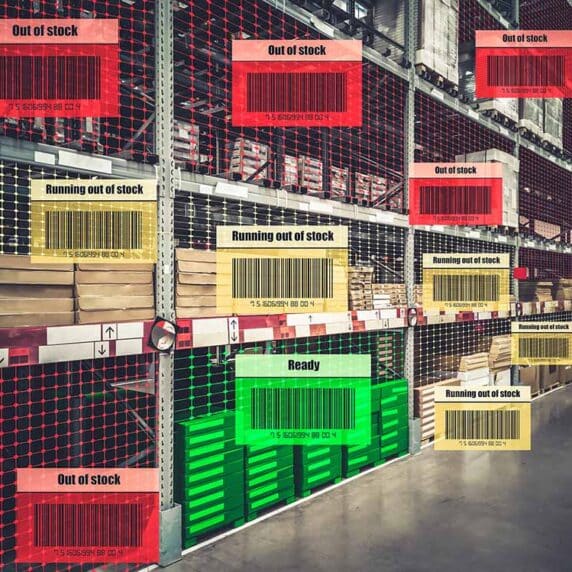Supply Chain Insights to Boost Performance: Key Findings
Summary. This summer, ToolsGroup ran five LinkedIn polls to gather supply chain insights to boost performance. Hundreds of professionals shared their top challenges in forecasting, inventory planning, pricing, S&OP, and AI adoption. The results reveal clear priorities: accuracy, agility, real-time scenario planning, and data-driven decision-making to protect margins. External research reinforces these trends—Gartner reports that 40% of logistics leaders struggle to fully leverage their systems. This article explores these insights and provides actionable guidance for companies seeking to strengthen resilience, optimize performance, and stay ahead in today’s dynamic supply chain environment.
Why Supply Chain Insights to Boost Performance Matter
In today’s dynamic markets, supply chains face immense pressure. Inflation, tariffs, and shifting consumer behaviors require faster, smarter decisions. According to McKinsey, global supply chain disruptions occur every 3–4 years on average, impacting up to 45% of annual profits over a decade.
To understand where leaders see opportunities and obstacles, we launched five LinkedIn polls this summer. These polls captured actionable supply chain insights to boost performance, reflecting the priorities of hundreds of professionals worldwide.
Recurring themes emerged — accuracy and agility, margin protection, real-time S&OP, and AI adoption — all critical focus areas for executives seeking resilient, high-performing supply chains.

Poll 1: Capabilities That Enhance Supply Chain Performance
Question: Which capability would most enhance your supply chain performance?
- Forecast accuracy – 37%
- Pricing agility – 19%
- Inventory visibility – 7%
- Proactive real-time decisions – 37%
Insight: The tie between forecast accuracy and proactive real-time decisions highlights the dual priorities of modern supply chains: precise forecasting and the agility to act fast. Organizations leveraging advanced inventory and forecasting report service levels above 97% while cutting stock by up to 30%.
The lower score for inventory visibility (7%) suggests that transparency alone is no longer enough: success now depends on turning insights into actions through real-time data and automation.
Poll 2: Blind Spots in S&OP
Question: What’s the most critical blind spot in your S&OP process today?
- Cross-functional alignment – 15%
- Real-time scenario planning – 31%
- Financial impact of decisions – 31%
- Adaptability to market shifts – 23%
Insight: Scenario planning and financial impact analysis are tied as top priorities. S&OP decisions must be fast, financially informed, and responsive to market changes. Static S&OP cycles leave organizations vulnerable, while adaptability gaps (23%) confirm the need for flexible, proactive planning.

Poll 3: Barriers to AI Adoption in Supply Chains
Question: What’s your biggest barrier to adopting AI in the supply chain?
- Data quality – 47%
- Security concerns – 13%
- Skills gap – 13%
- Change resistance – 27%
Insight: Almost half of respondents cited data quality as the main barrier. Gartner reports that only 8% of CEOs consider their CSCOs fully AI-savvy, highlighting how AI adoption often fails due to poor data and organizational readiness.
Change resistance (27%) further confirms that technology alone isn’t enough. Success requires alignment between people, processes, and AI-driven platforms. Skills and security concerns are less pressing, indicating that the industry is moving past early-stage hesitation.
Poll 4: Pricing Pressures Threatening Margins
Question: Which pricing challenge is most affecting your bottom line?
- Margin erosion – 59%
- Lack of automation – 12%
- No competitive insights – 18%
- Channel misalignment – 12%
Insight: Margin erosion dominates concerns, chosen by nearly six out of ten respondents. Volatile costs, fluctuating demand, and competitive pressures threaten profitability. Companies implementing AI-powered pricing have recovered up to 5 percentage points in margins. However, many organizations still underutilize automation and competitive insights, with only 12–18% of respondents identifying them as critical.
This indicates a major opportunity: automation and competitive insights remain underutilized but can significantly boost profits.

Poll 5: Managing Tariff-Related Disruption
Question: What’s the toughest part of managing tariff-related disruption in your business?
- Cost forecasting – 29%
- Supplier changes – 6%
- Pricing strategy – 29%
- Inventory planning – 35%
Insight: Inventory planning tops the list, showing how tariffs disrupt stock allocation and sourcing. At the same time, cost forecasting and pricing strategy (29% each) highlight financial pressures.
Integrated platforms linking operational decisions to financial outcomes are crucial to mitigating risk and protecting margins.

Building Resilient Supply Chains
These polls reveal the most pressing areas for supply chain leaders: forecasting, inventory, pricing, S&OP, and AI adoption. Research from Gartner, BCG, and McKinsey confirms that these priorities are essential for resilience and profitability.
The path forward is clear: combine accurate forecasting, real-time agility, robust data, automated pricing, and modern S&OP. Organizations focusing on these areas are better positioned to navigate disruptions, maintain service levels, and strengthen competitive advantage.





